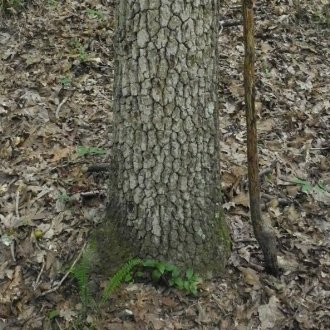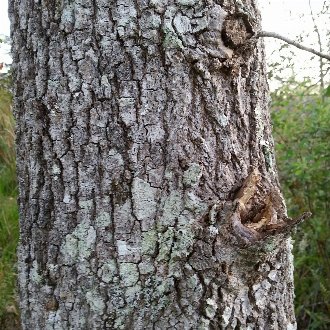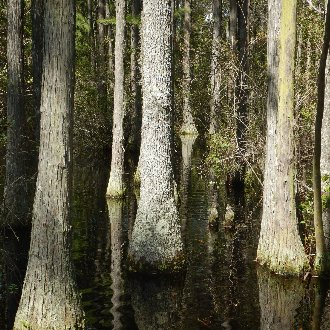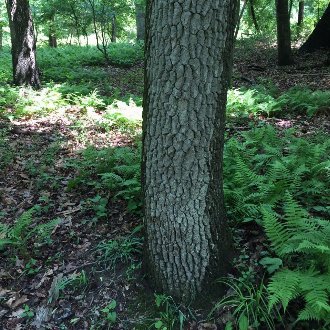Swamp Tupelo vs Black Tupelo
This guide is under construction and has not been published yet. It may have errors. When in doubt, double-check other sources for definitive ID.These closely-related species are visually similar and were even treated by some authorities to be different varieties of the same species. They can be distinguished by subtle differences in leaf shape and texture, bark, flowers, and fruit, and there are often dramatic differences in the shape of the base of the trunk on mature trees. Although there is some overlap in habitat, as the name suggests, where their ranges overlap, swamp tupelo ranges into wetter habitats whereas black tupelo ranges into much drier habitats.
Swamp Tupelo (Nyssa biflora) | Black Tupelo (Nyssa sylvatica) |
A large tree of swamps and other sites with standing water and water-saturated soils. | A large, generalist tree of the eastern US and Ontario. |
Leaves average narrower and more blunt-tipped. Leaf tips may be acute (coming to a narrow angle), but not acuminate (tapering to a point.) Mature foliage tougher and more leathery. Photo © Craig Martin, Public Domain. | Leaves average wider and more pointy at the tip, and may be acuminate (tapering to a long point.) Mature foliage thinner and more delicate. Photo © Andrew Conboy, CC BY 4.0. |
Trunk of mature trees often buttressed (greatly widened) at the base. Photo © Valerie Anderson, CC BY 4.0. | Trunk of mature trees not buttressed at the base. Photo © mjpapay, CC BY 4.0. |
Bark of mature trees is more irregularly ridged, with ridges often more broken; cracks between ridges are often not as deep. Photo © Valerie Anderson, CC BY 4.0. | Bark of mature trees is regularly fissured, with long vertical ridges. Ridges very rugged on older trees. Photo © Andrew Conboy, CC BY 4.0. |
Found in wetter habitats, including sites with standing water for prolonged periods of time. Uncommon on well-drained, mesic sites, and absent from dry sites. Photo © Ryan Watson, CC BY 4.0. | Where ranges overlap, found in drier habitats, at wettest, on sites that flood for shorter periods of time. More common on well-drained sites, and found on dry sites as well. More likely in swamps in the north of its range where swamp tupelo is absent. Photo © Michael Ellis, CC BY 4.0. |
References & External Resources
These short lists show only links helpful for ID. For a complete list of references and resources also covering other aspects of ecology, visit the links section of the full article on each plant, which is the first entry here.










